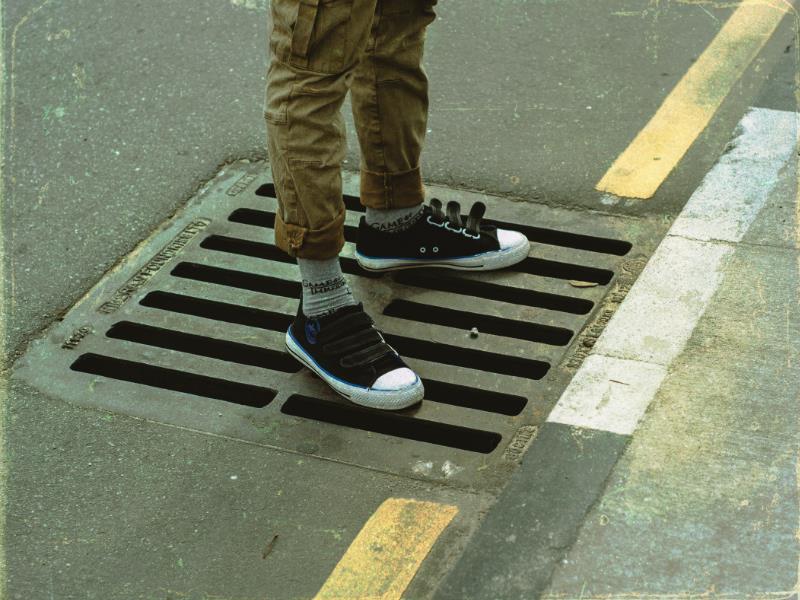Sewerage
Home / Wiki / SewerageLast updated Thu 27 Jan 2022
Modern plumbing systems rely on gravity to move water from reservoirs and water towers into homes, but that can make it logistically difficult to utilise those same systems to move sewerage around. Fortunately, modern infrastructure planning allows for both government planners and private builders to create independent systems that will facilitate the transport of sewerage with ease.
Hazards
When you're storing sewerage in any one place, there are likely to be hazards associated with it. On a simple level, sewerage is an incredibly potent odorous pollutant, and so simply dumping it anywhere will create a scenario in which anyone in the vicinity of the dump will need to deal with the odour it produces.
Additionally, while sewerage is typically composed of bio-organic materials and is thus biodegradable, there will also be several harmful varieties of bacteria present within that sewerage, particularly if human waste is a component of the wastewater. With the threat of E. coli and other bacteria, sewerage cannot be allowed to potentially contaminate any drinking water.
Any additional additives, such as nutrients and chemicals that may be added to the wastewater naturally during its use can cause environmental damage, either by encouraging life where it is not desired, such as fertilising the growth of algae, or causing harm to the local ecosystem, such as killing fish. Ultimately, if sewerage is dumped into existing bodies of water, the increased murkiness alone will make it much harder for that water to support any of the surrounding life, such as fish or frogs, and that can quickly cascade into further ecological damage.

Someone stands ontop of the drain in a road
Local Waste Treatment
Where it is impractical to build urban sewerage systems, homeowners typically employ a system referred to as a 'septic tank' instead. A septic tank is essentially a miniaturised version of an urban water treatment plant, and is built to a scale that will allow it to service a single household instead of an entire city or urban region.
This change in scale, however, does mean that the septic tank sacrifices some of the functionality of the larger urban systems. Waste flows into the septic tank, where scum is allowed to float to the top and sludge sinks to the bottom. When new water flows into the septic tank, it pushes the treated water currently held in the tank through to the drain field, where it is released through perforated pipes positioned in trenches roughly 1m-1.5m deep. These pipes are buried in gravel and dirt, with the gravel being placed in the bottom 0.5m-0.75m of the trench, and the dirt being placed atop of that. Once it has reached the pipes, the water is allowed to simply drain out into the field, which is sized according to its composition. For instance, if the field is made up of soft, absorbent dirt, then it may be smaller than a drain field built of hard clay, which can struggle to absorb water as quickly as the dirt would.
Urban Waste Treatment

This grate is expelling steam, as is common in some sewerage systems
While, ideally, an urban waste treatment system would be entirely gravity-powered, that is incredibly difficult to accomplish in reality. Ideally, there is a pipe that will run from your home and will use gravity to feed into the sewer main in your street, which will then use gravity to feed the sewerage into the treatment plant.
If the landscape doesn't accommodate such infrastructure, there are options available to city planners. Typically speaking, either a grinder-pump or a lift station will be used to move the sewerage vertically, which can help crest hills or navigate obstacles. Alternatively, the city or local government responsible for installing and operating the sewerage system may instead choose to tunnel through any given object in their way, but this is typically too expensive. Once it has conquered the obstacle in its path, the sewerage is then free to continue to utilise gravity along its journey.
Odour In The Home
In both rural and urban homes, there is a risk that sewerage can emit an odour through the pipes back into the home, which is undesirable in the best of circumstances. For rural homes, this is typically the result of those pipes leading straight to the septic tank, while in urban homes, this generally won't be an issue unless sewerage has become clogged along the pipes. Fortunately, modern plumbing systems employ 'P-traps' to block any gases from re-entering the home, so named due to the P shape the pipe creates.
A P-trap is a simple additional loop of pipe located near the origin of any sewerage in your home, such as the kitchen sink or bathtub drain. Unlike liquids, which utilise water pressure to push themselves around the loop and through to the sewerage drainpipe, gases find it difficult to push past the loop and back into the home. Instead, homes utilise an additional vent to allow the gases to escape harmlessly back into the surrounding atmosphere.

A child skates around a drain pipe
Heidy Barbera
05 Dec 2025
Verified
I’m just a tenant at a rental property however I had Mitch come for 2 days to undertake some repair works! He was the most helpful, reliable and respectful person I have ever come to my house to do ... more
Rocky Scott
05 Dec 2025
Verified
THE GUY WAS VERY POLITE ,EFFECIENT, FAST AND STRAIGHT FORWARD , TOLD ME WHAT I NEEDED TO KNOW AND HE WAS GOING TO GET THE REALESTATE AUTHORITY BEFORE DOING ANY PROGRESS OR NOT ,HIS WORK ETHICS, MANNER... more
James Ogilvy
05 Dec 2025
Verified
We had the please of Mitch coming through to sort out a bunch of issues. His work is impeccable, and a genuinely great guy. Can not recommend highly enough!

We happily service all areas of Brisbane and beyond. Get in touch today.
And enjoy peace of mind with a dedicated team on call 24/7
